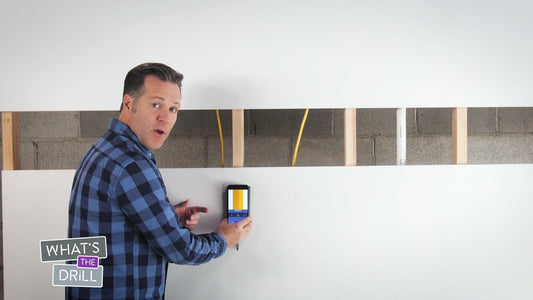Drilling or cutting in drywall is needed for your DIY project? A well-planned approach is key to avoiding common pitfalls and ensuring a safe and successful outcome.
Many DIY mishaps occur due to unforeseen elements hidden in walls and floors, such as pipes and wiring. To avoid these:
- Use Detection Tools: Employ stud finders and wall scanners to locate wires and pipes.
- Consult Building Plans: If available, review your home’s blueprints for additional insight.

Tool selection for safety:
Choosing the right tool is crucial for both precision and safety.
- Match Tools to Materials: Ensure your tools are appropriate for the materials you're working with.
- Regular Maintenance: Keep tools sharp and in good condition to prevent accidents.
Consider these essential tools for your project:
- Cordless Drill: A versatile tool for various tasks, offering mobility and ease of use.
- Saw: Select the right type (hand saw, jigsaw, or circular saw) based on the material and precision needed.
- Level: To ensure your drilling or cutting is perfectly horizontal or vertical.
- Stud Finder: An indispensable tool for locating studs, pipes, and wires behind drywall.
Personal safety equipment:
Don't overlook the importance of protective gear:
- Essential Gear: This includes goggles, gloves, and ear protection.
- Proper Usage: Ensure your gear is worn correctly and consistently.
Precision planning before drilling or cutting
Mistakes often stem from inaccurate measurements or planning.
- Detailed Marking: Double-check measurements and clearly mark drilling or cutting lines.
- Consider Structural Integrity: Avoid areas that might compromise the structural strength of walls or floors.

Electrical safety
One of the gravest risks is cutting through live wires.
- Use Circuit Finders: Detect live wires before you drill or cut.
- Power Off: When possible, turn off electricity to the area you’re working on.
Recognizing DIY boundaries
Understanding when a task is beyond your skill level is crucial, you should consult professionals. For complex or risky projects, seeking expert advice is wise.
A clean workspace to prevent a disaster
A clutter-free area is essential for safety and efficiency. Organize your tools, materials and in general you should keep your workspace tidy to avoid accidents.
Preparation and caution are key to any successful DIY project. By following these guidelines, you can avoid common pitfalls and ensure that your drilling and cutting tasks are safe and effective. Remember, the best DIY outcomes are achieved when safety is prioritized.




